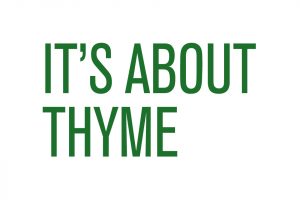The last few years have been a trying time for gardeners in the central and southern parts of our state. Typically, Texas droughts are busted one of two ways: either through a tropical system or systems from the Gulf or eastern Pacific Ocean, or climatic changes resulting from El Niño.
This year’s El Niño developed during the spring and has helped bring much needed rainfall over our area.
In the simplest terms, El Niño occurs when eastern trade winds subside over the central and western Pacific Ocean, causing sea surface temperatures to rise in the eastern Pacific, near the coast of South America.
This rise in temperature creates global changes in atmospheric circulation (including the jet stream that affects our own weather). Local weather changes include above normal rainfall, and fewer tropical systems in the Gulf and Atlantic Ocean.
The stronger the El Niño, the more pronounced the effects, and this one is expected to strengthen early this fall and may result in a colder/wetter winter. We should at the very least be in for some cooler summer months!
What should we do with this information? This is a good time to evaluate your grass and plant choices. The last 5 years will tell you a lot about the hardiness of a certain plant.
If it was able to withstand extreme cold and heat and then years of drought followed by way too much rain this spring, then it’s definitely a keeper.
We live in a geographic region wrought with wide swings in our weather patterns, and although the last few years have been extreme, they are not unusual for central Texas.
Since this is a great year to plant, while examining your yard, look at where you have been watering during dry periods, either with a hose or irrigation system. Are there spots that you missed that were hard to reach? Maybe on a quick drying slope or in a super-hot spot?
Any of the areas would be good candidates to install super drought-tolerant plants now that it is safe to plant again.
Esperanza (yellow bells) and pride of Barbados, salvias (S. namaensis and big red are two of my favorites), agave, prickly pear, skeleton-leaf golden eye, and Knock-Out roses, rosemary, mountain laurel and native lantanas are good candidates for super dry, sunny spots (as long as you water them to get them established).
And don’t forget about your shady spots. This is the right time to determine where the low, wetter spots are and install plants that can take a wide range of water conditions. Dwarf nandinas, katie ruellia, viburnum, liriope (both big blue and giant) and several native perennials including Turk’s cap, Texas columbine, wood violets and inland sea oats are all good choices.
Take advantage of our feast that usually follows famine here in Texas. Use this year to get a jump on our next dry spell (there will always be one!) and establish your new beds now. Stay dry and happy planting!
If you have a question for Chris or Amanda, send it via email to iathyme@yahoo.com.Or mail a postcard to It’s About Thyme: 11726 Manchaca Road, Austin, TX 78748 www.itsaboutthyme.com.





